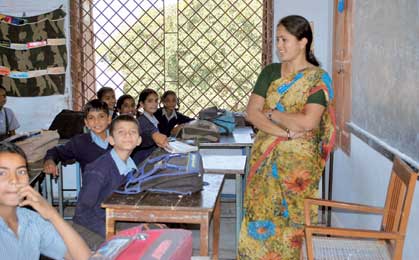Anjali Razdan

Is student mobility an issue in your school? If not, it could become an issue as your school population changes. The freedom to move and seek new opportunities is a hallmark of our identity as Indians. However, while this freedom maybe perceived as a birthright, mobility has its liabilities, especially when it comes to schooling.
Student mobility refers to the phenomenon of students changing schools for reasons other than grade promotion. Student mobility is a topic that frequently surfaces in discussions about problems of urban and rural schooling. But the topic fades from the agenda as discussions turn toward reform initiatives and school restructuring. You will probably agree that students who frequently change schools during the school year are at greater risk of academic and behavioral problems. Students who often move from school to school fall into one of the following categories:
- Children of families in the armed forces
- Children in foster care
- Children whose families are struggling with domestic violence, emotional disorders, or substance abuse
- “Third culture kids” (i.e., students whose parents are from India, but whose jobs result in their children being raised and educated in other countries)
How schools can help highly mobile students
All educators recognize the challenges students face when they are forced, because of economic issues or family challenges, to enter and exit multiple schools; sometimes over the course of a single school year. In such cases, students will be confused by new curricular programs, overwhelmed by new teachers and classmates, and will miss significant chunks of “in-school time” as their family makes the physical move across a city or sometimes to a state on the other side of the country. Moving during the school year and having to change schools is disruptive, and sadly, often destroys the child’s chance of succeeding in school.

Educators can make a big difference in the lives of such families. Once you suspect a child may have been subjected to frequent moves, you can take steps to help him adjust. First, make sure you record as much information as possible about the student, his abilities, behaviour and skills if he is leaving your school and moving to another; or conversely, get in touch with his old school and request the child’s full set of medical and academic records so that you can make his transfer as smooth as possible.
Track the progress, especially of transient students, who may have already moved repeatedly, and make sure they receive necessary additional assistance; if possible, provide special tutoring to help highly mobile children catch up with the rest of the class.
Create a plan at the school level to help make the transition easy for mobile students. To the extent that you’re able, work to develop relationships with the parents and make them part of the team that oversees and monitors the child’s well-being and academic support.
Counsel parents on the effects that moving from school to school will have on their children; address this with sensitivity; poor families are often forced to move their families as their opportunities for work shift to new locations.
Involve translators and counsellors to the extent that it’s possible when registering a new student; again, such personal contact and conversation in the family’s native language helps the family feel welcome and cared for and reassures parents that their child will be safely assimilated into the school.
Follow up with parents a few weeks after their child’s enrollment. Parents may have questions once their child has started school and may be hesitant to return to school for answers and additional guidance.
School transfers and transitions are never easy but to the extent you and your school are able to anticipate and prepare for them, the highly mobile students you serve can count on a transition that’s relatively easy and comfortable. Above all, your warmth and compassion will make the difference.
The author is Principal, Indus World School, Sainikpuri, Secunderabad. She can be reached at principal@iwshyd.com.
